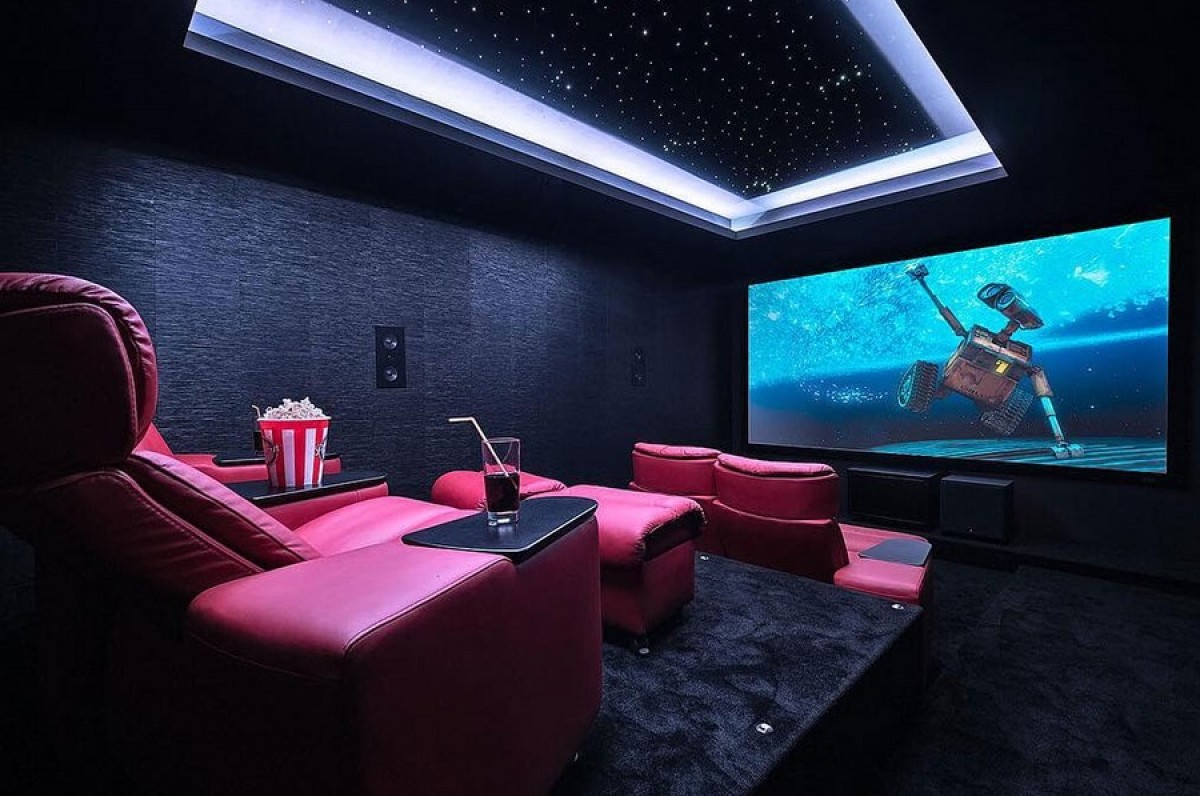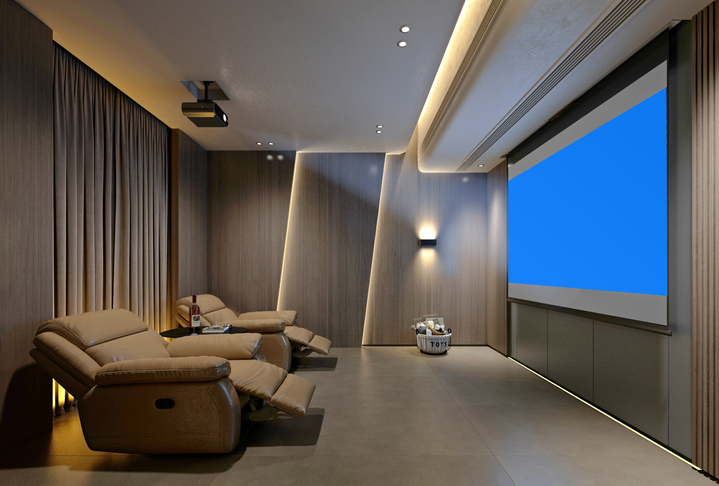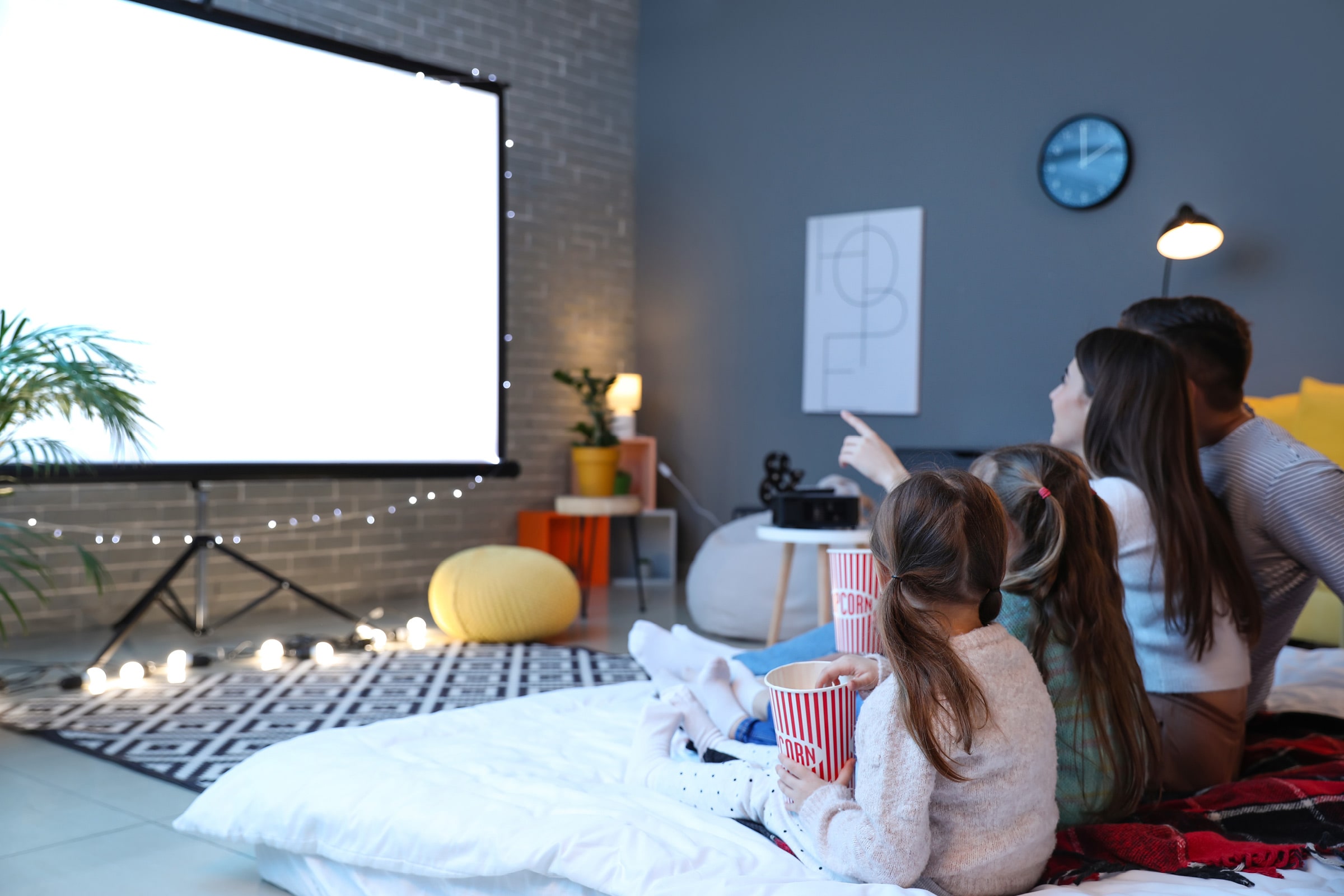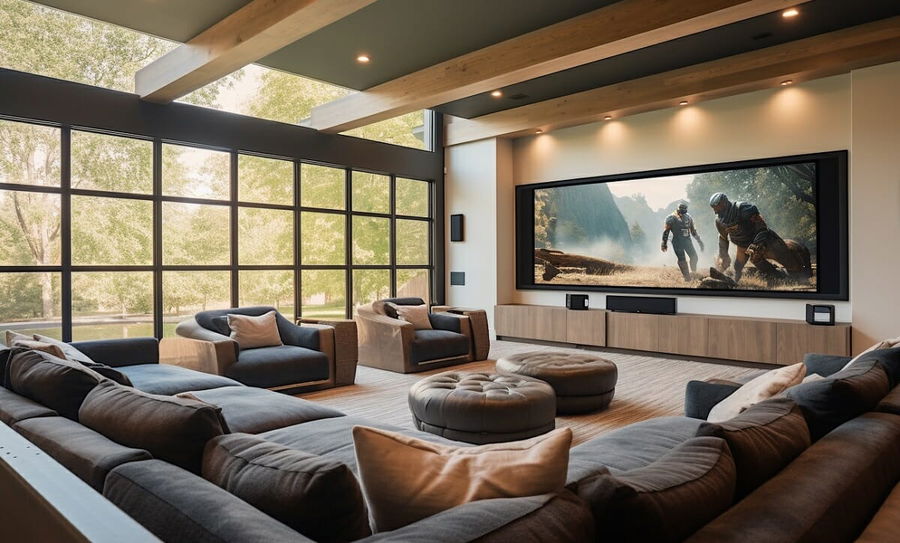Home Theater Tampa: Bringing Movie Theater Experiences Directly to You
Wiki Article
Home Theater 101: Every Little Thing You Need to Know for a Motion Picture Experience in the house
Producing a home cinema that rivals the cinematic experience of an industrial theater includes cautious consideration of numerous parts, consisting of display option, sound systems, and area layout. Each element plays an essential function in accomplishing the preferred atmosphere and performance. Whether you are considering the ideal screen size or the intricacies of border audio, recognizing these principles is crucial. As we discover these crucial components, it becomes evident that the choices made can considerably impact your overall watching experience, leaving one to contemplate exactly how these decisions will form your individual movie theater.Picking the Right Screen
When setting up a home theater, picking the best display can make or damage the checking out experience - tampa home theater installation. The screen offers as the centerpiece of your setup, affecting image top quality, seeing angles, and total aesthetic. Trick elements to consider include display type, resolution, and sizeFirst, establish the proper display size based upon your area dimensions and seating range. A basic guideline is to rest approximately 1.5 to 2.5 times the diagonal display dimension for optimal watching. Next off, choose in between numerous screen types, such as fixed-frame, mechanized, or retracting screens, each offering unique benefits. Fixed-frame screens commonly offer the ideal image high quality, while mechanized options permit flexibility precede usage.
Resolution is one more critical variable. For a really immersive experience, think about a screen made for 4K and even 8K material, making sure intensity and quality. Furthermore, take into consideration the display's gain, which affects brightness and contrast; a greater gain can enhance brightness in well-lit spaces, while a reduced gain might be more appropriate for darker settings.
Picking Audio Equipment
Audio equipment is a critical element of any type of home movie theater system, substantially boosting the general watching experience. The choice of audio gear can figure out the depth, clearness, and immersion of noise, critical for developing a motion picture ambience.When selecting audio devices, consider a border stereo, which normally consists of a receiver, several speakers, and a subwoofer. A 5.1 or 7.1 channel system is recommended, where the first number represents the speakers and the 2nd the subwoofer, offering an immersive soundscape. The receiver is the heart of the system, managing sound and video signals, and should sustain modern formats like Dolby Atmos for a boosted spatial experience.
Quality speakers are essential; try to find versions that provide a balanced noise account with great bass action. Floor-standing audio speakers can create richer noise, while shelf alternatives conserve area. Additionally, take into consideration wireless alternatives for ease of installment, although wired systems usually provide exceptional efficiency.

Optimum Seating Plans
Producing an excellent home cinema experience pivots substantially on optimal seating setups. The arrangement of seats plays an essential role in both convenience and viewing high quality, straight affecting the overall cinematic experience.First, consider the screen dimension and watching range. A common guideline is to position seats at a range approximately 1.5 to 2.5 times the diagonal size of the display. This makes sure an immersive experience without stressing the eyes.
Following, elevation is crucial. If your seating is in a tiered style, the back rows must be greater than the front to stay clear of blockages. For flat seating, ensure that the front row is not too near to tampa home theater the screen, and that every person has a clear line of sight.
Furthermore, take into consideration the plan in terms of social dynamics. Group seating can enhance the common experience, while specific seats might be chosen for individual viewing.

Lastly, prioritize comfort with ergonomic seats that sustains extended watching periods. Integrating reclining chairs or supported seats can significantly improve the experience, making the home cinema a favored location for both enjoyment and relaxation.
Lighting and Ambiance
Reliable lighting and setting are necessary parts of a properly designed home movie theater, as they considerably influence the viewing experience. The right lighting can improve the cinematic feel, while poor selections can diminish it. For optimum results, take into consideration a split lights technique that consists of ambient, task, and accent lights.Ambient lighting gives general illumination, ensuring that the area is not totally dark, which can stress the eyes. Dimmer buttons are very advised, enabling adjustments based upon the content being watched. Job lighting, such as wall surface sconces or flooring lamps, supplies useful lighting for activities like reading or browsing the area without interfering with the total environment.
Accent lighting can be used to highlight building functions or develop prime focus, including depth and passion to the area. LED strip lights behind screens or along racks can supply a refined glow that improves the aesthetic experience without frustrating the audience.

Wiring and Installation Tips
A tactical wiring configuration is vital for accomplishing ideal performance in your home movie theater system. Correct wiring not only ensures top notch sound and video clip signals yet also improves the overall aesthetic of your area. Begin by drawing up your layout, recognizing where each element will be positioned, including your display, speakers, and receiver.When selecting cable televisions, prioritize high-quality, appropriately determined electrical wiring to reduce signal loss. HDMI cords must be utilized for video links, while audio speaker wire ought to match the specs of your audio speakers and amplifier. Select in-wall rated cords to conform with safety criteria and maintain a tidy look.

Final Thought
In summary, developing an outstanding home theater experience requires cautious factor to consider of numerous elements, consisting of display option, audio devices, seating arrangements, illumination, and wiring. Each part plays a critical function in achieving optimal efficiency and atmosphere, eventually improving the pleasure of home enjoyment. By focusing on these factors, a cinematic ambience can be effectively reproduced, permitting immersive viewing experiences that rival conventional movie theater setups. Attention to information in each area is important for overall fulfillment.Creating a home cinema that rivals the motion picture experience of an industrial theatre includes careful factor to consider of several parts, including display option, audio systems, and room format.When setting up a home movie theater, selecting the best screen can make or damage the seeing experience. Next off, select between various screen kinds, such as fixed-frame, mechanized, or retractable screens, each offering distinct benefits. For a genuinely immersive experience, take into consideration a screen made for 4K or also 8K material, guaranteeing sharpness and clearness.In recap, creating an exceptional home movie theater experience needs careful factor to consider of various elements, including display option, audio devices, seating arrangements, illumination, and wiring.
Report this wiki page